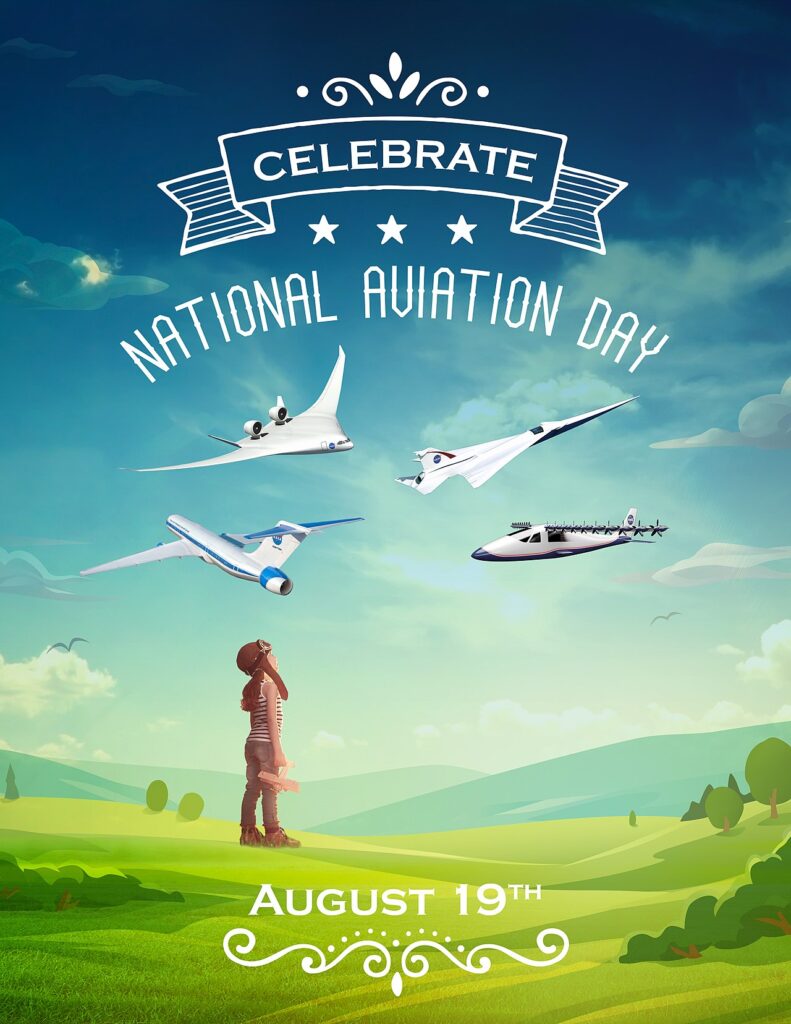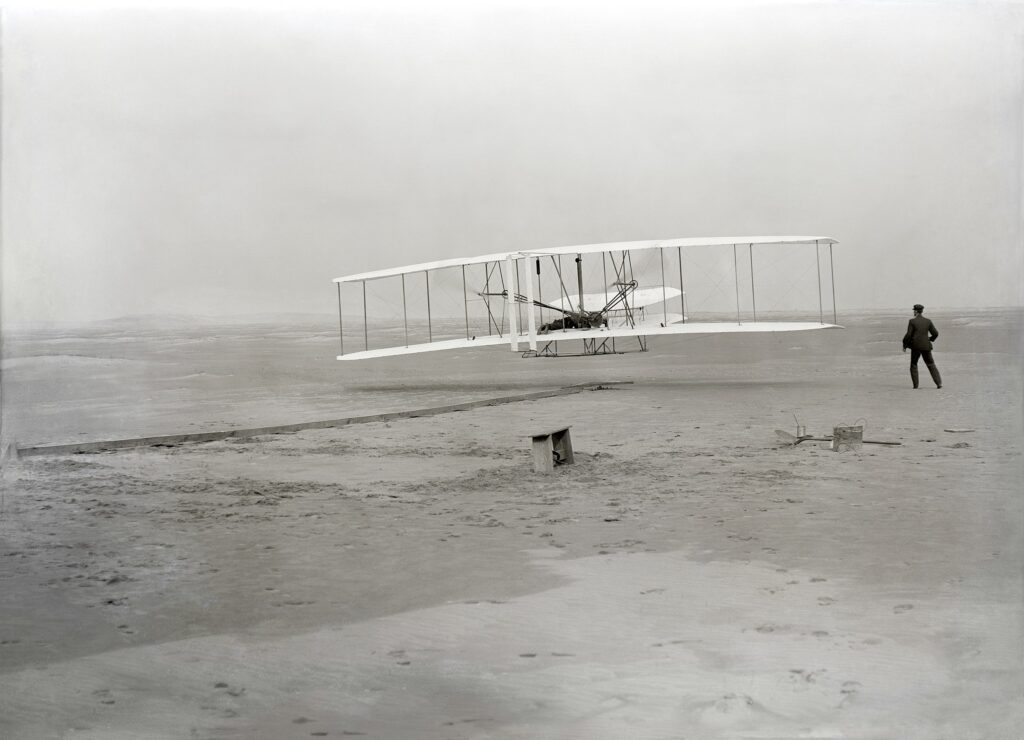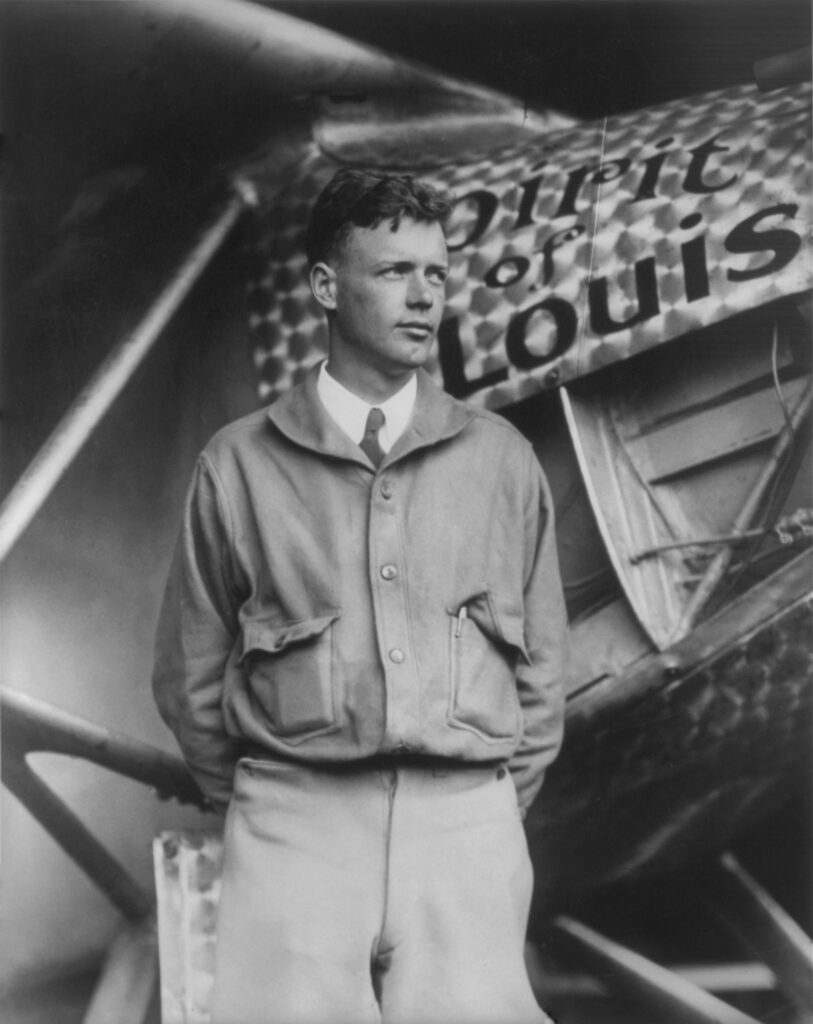For National Aviation Day, we celebrate Ohio as the Birthplace of Aviation and the Freemasons who have inspired us from the air.
In 1939, President Franklin Delano Roosevelt issued a presidential proclamation establishing August 19th National Aviation Day. On this date in 1871, one of Ohio’s most treasured sons was born: Orville Wright. Orville was an aviation pioneer who, along with his brother Wilbur, invented and built the world’s first motor-operated airplane. Together, these small town, self-taught engineers changed our world forever and created a technology that defined the 20th century.

The Wright Brothers
The boys Wilbur and Orville were born to Milton and Susan Catherine Koerner Wright in Dayton, Ohio. Milton was a fiercely independent thinker, a trait he would nourish in his children, giving them extreme confidence in their talents and an ability to overcome times of struggle. This determination, along with the technical mastery of the boys, was the perfect combination to lead them to success.

The brothers opened a bike shop in Dayton in 1892 and spent years working on printing presses, bicycles, motors, and other machinery. Here they became adept mechanical engineers and began putting their skills to work building a flying machine. Starting in 1900, they created several gliders and used them to develop piloting skills. On December 17, 1903, after years of building, failing, and building again, they made the first controlled, sustained flight of a powered aircraft with the Wright Flyer. These amazing men are now credited with inventing and flying the world’s first aircraft.
Ohio: The Birthplace of Aviation
Because the Wright Brothers made their first successful flight in North Carolina, there has been years of debate over the state’s “First in Flight” slogan. However, historians agree that the research, design, and construction for the Wright Flyer were completed in the brothers’ bike shop in Dayton, Ohio. As such, in 2003, Congress officially deemed Ohio the “birthplace of aviation,” formally recognizing Dayton as the home of Wilbur and Orville. We Ohioans are proud of our community and our contributions to science and aviation. Dayton is now the location of The National Air-Force Museum, which has more than 300 aircraft on display.
Notable Masonic Aviators
Since Freemasonry began centuries ago, our brethren have always been at the forefront of scientific advancement. True to form, some of the most notable achievements following the birth of flight were accomplished by Freemasons. These courageous Brothers continue to serve as an inspiration to Masons around the world for pushing the boundaries of humankind’s capabilities.

Samuel Franklin Cody
Samuel Cody was an early aviator, not to be confused with Freemason Buffalo Bill Cody. Samuel, too, became famous as Wild West Showman, but not for his marksmanship, but instead for his fascination with kite flying. Although he was not a Mason himself, a lodge in England is named on behalf of his flying career, the Samuel Cody Aviation Lodge No. 9953. He worked for years developing the Cody Kite, which was powerful enough to carry several people at once. Ultimately, his designs were adopted and used in meteorology, and he was even enlisted to build aircraft for the British Admiralty. In 1908, just a few years after the Wright Brothers’ first successful flight, Cody became the first man to fly a plane built in Britain.
Brother Charles Lindbergh
At the young age of 25, Lindbergh stunned the world when he completed the first solo, non-stop flight from New York to Paris. In 1926, he was raised a Master Mason at Keystone Lodge No. 243 in Missouri just months before his historic flight. While little is known about his Masonic journey, he wore a square and compass pin during his flight. His plane, The Spirit of St. Louis, bore a Masonic emblem.All told, Lindbergh’s famous flight was more than 33 hours and spanned 3,600 miles.
Illustrious Brother, John Glenn, 33°
Perhaps the most well-known Ohio Freemason, John Glenn, was an astronaut, United States senator, and pilot. Among his impressive list of accomplishments, Bro. Glenn set a transcontinental speed record in 1957 when he traveled from Los Angeles to New York in 3 hours and 23 minutes. He became a “Mason at Sight” in 1978 during a ceremony conducted by the Grand Master of Ohio, Jerry C. Rasor. He also received the Scottish Rite Degrees in the Valley of Cincinnati in 1997.
We are proud of Ohio’s connection to the history of aviation and the significant contributions Freemasons have had on flight. Are you curious about other Masonic contributions from the great state of Ohio? Check out our blog on the origins of professional baseball, Ohio Freemasonry in the United States Presidency, or dive into a brief history of Freemasonry in Ohio.